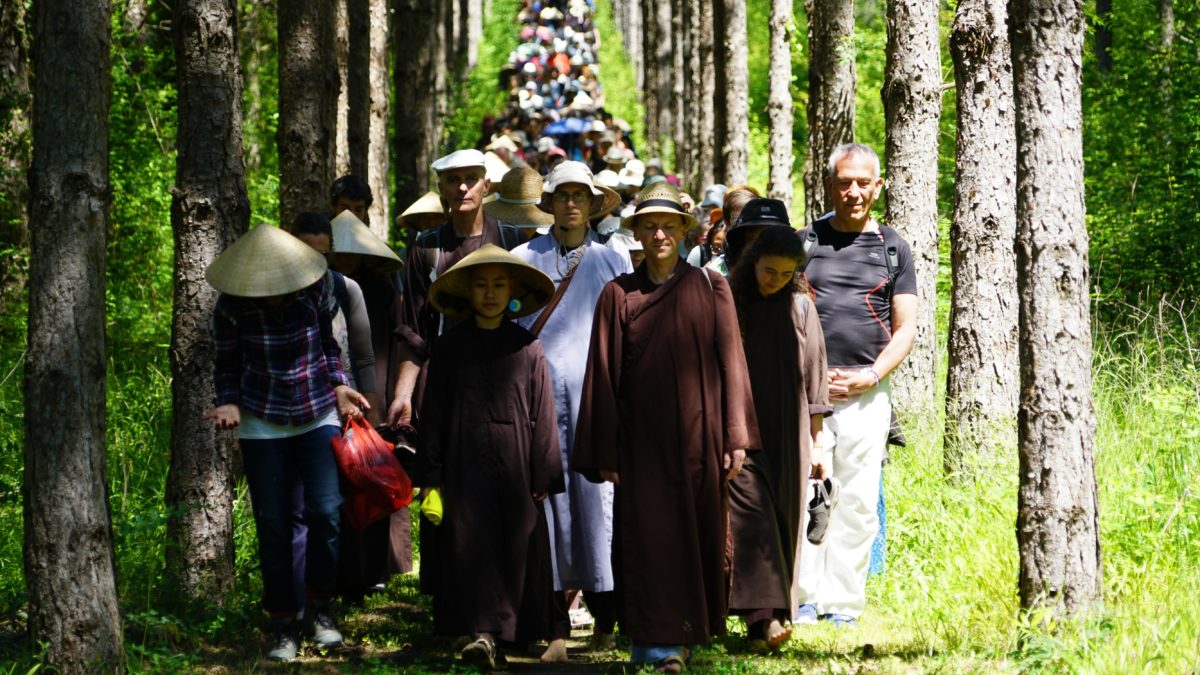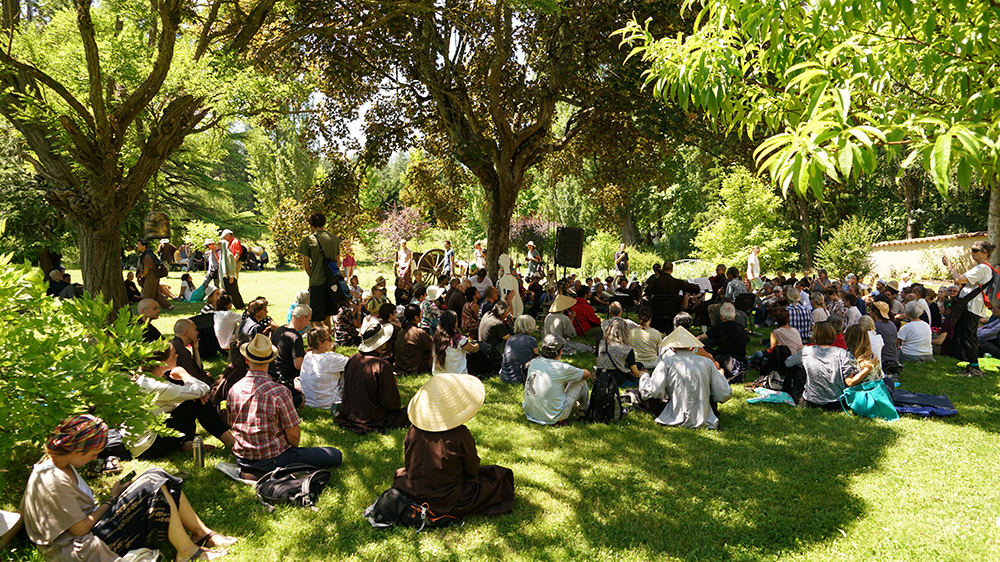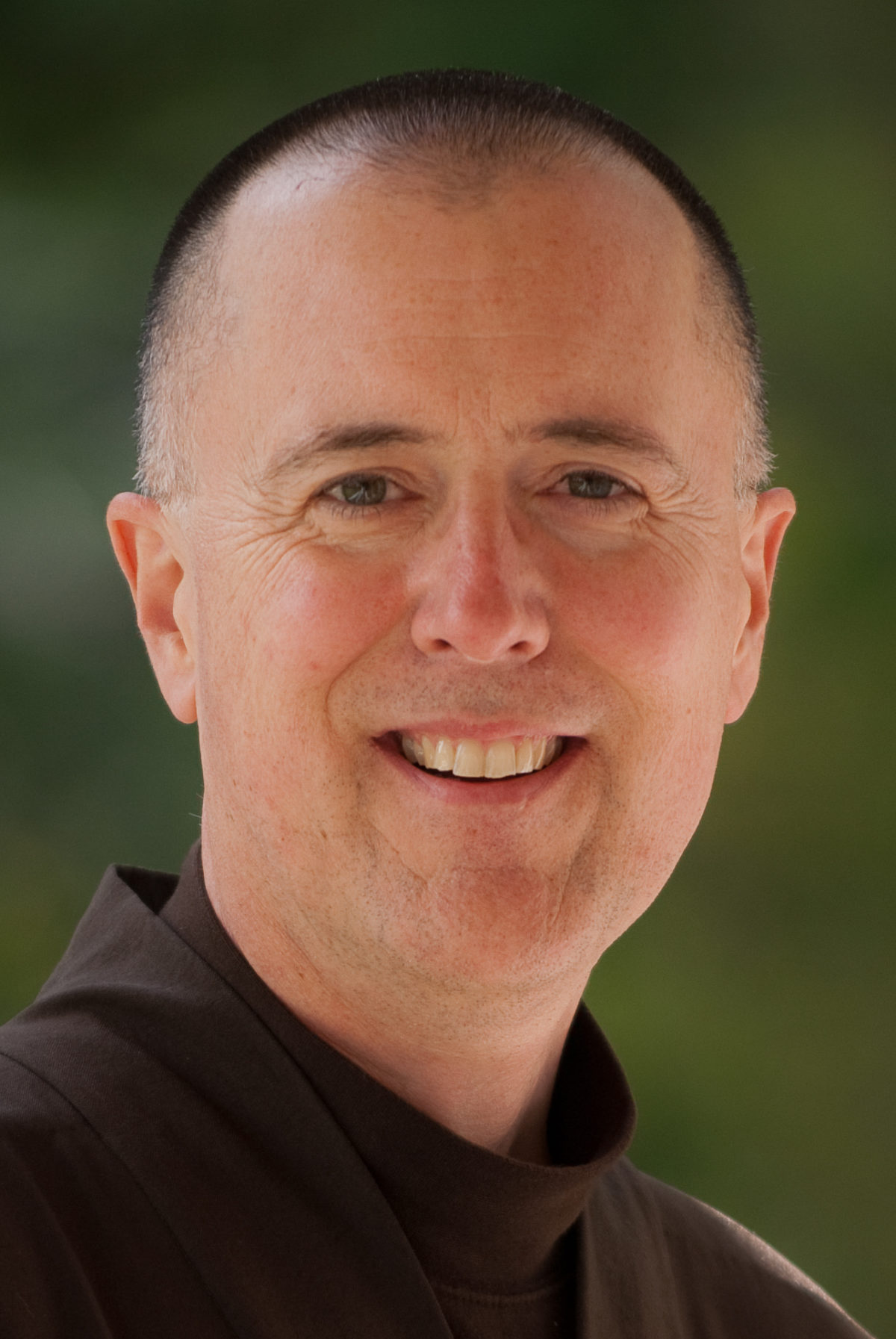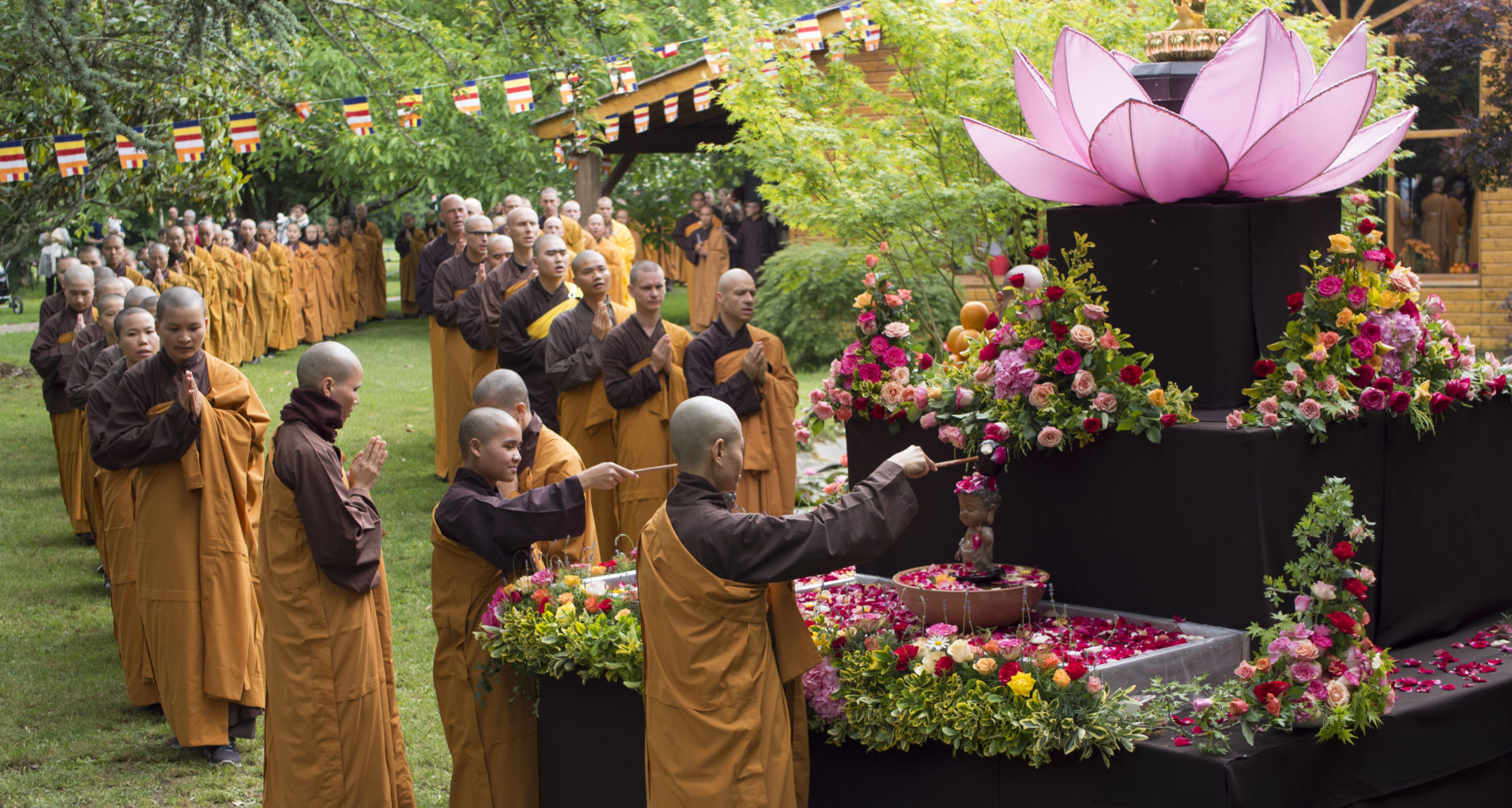By Jon Prescott

Sangha building doesn’t have to be a lot of work. When Sangha is created in community, it can be fun to be one of many voices contributing to the process. We recently experienced this sense of joy while working together to create the Anacortes Mindfulness Community.
While the seed of the Anacortes Mindfulness Community had been germinating for some time,
By Jon Prescott

Sangha building doesn’t have to be a lot of work. When Sangha is created in community, it can be fun to be one of many voices contributing to the process. We recently experienced this sense of joy while working together to create the Anacortes Mindfulness Community.
While the seed of the Anacortes Mindfulness Community had been germinating for some time, it first broke ground during a 2017 Order of Interbeing retreat at Deer Park Monastery. Order of Interbeing-then aspirant Peter Nickol and I shared a room. As we got acquainted, we realized we both wanted to create a Sangha in Anacortes, Washington. I’d facilitated a Sangha nearby Guemes Island since 2005, but I hadn’t known how to expand our Sangha into Anacortes, even though I’d developed many relationships there in my role as a hospice, cancer-care, and hospital chaplain. Peter also knew the community and felt a groundswell of practice energy waiting to be expressed. He put leadership in contact with energy, and the Anacortes Mindfulness Community was born.
Our first step was to partner with the Anacortes Center for Happiness, who not only housed us in their beautiful, bright third floor ballroom, but also introduced us to the community using their broad social media network. Their introduction was so effective that we had twenty-five people at our first sitting! Peter was right—a large group was looking for practice.
After three months, we’d outgrown the space and received an offer from the local Episcopal Church to move into their Parish Hall. They gave us the use of a large sitting room, kitchen, meeting area, and children’s space, all free of charge. The roots of their support were planted years before when I’d done a three-month Clinical Pastoral Education unit with five Episcopalian priesthood aspirants. We’d remained friends, and the two who became local priests were happy to offer their under-used building to our new Sangha.
From the Anacortes Center for Happiness and the Episcopal Church, we learned that many people are happy to share their resources—physical resources (donation of the Episcopal Church's Parish Hall), monetary resources (donations from people who don't attend our sittings), and harder to describe succinctly, friendly resources (enthusiastic support for our Sangha's presence and work by area clergy)—to support our practice, even if they don’t choose to join us on the cushion. They have touched deep peace in their own traditions and want to support a diversity of spiritual paths.
These early experiences of support teach us to include many partners in our Sangha creation. Since we have a thin roster of experienced leaders, we invite many members to participate in leadership, each sharing their strengths. One member posts weekly summaries of our Dharma talks to the Facebook page and website she created. Another brings her social justice awareness to our not-so-diverse Sangha. Another uses her experience in government to establish our non-profit status. As a group, we are encouraging and training many members to serve as bell minders. We even pass the small bell around the circle during Dharma Sharing, so everyone has a chance to invite the bell between offerings and hold the Sangha in love. We find that broad participation in leadership creates a cohesive Sangha and helps people feel they belong.

As the Anacortes Mindfulness Community develops, we hope to shine the light of togetherness on our emerging challenges. One challenge is our tendency to place too much power in the hands our facilitator, which can create dependency and deny the Sangha the transformation and joy of engaging in its own process. Instead, we’re always looking for ways to share authority by distributing decision-making to appropriate individuals and groups. Making shared decisions helps create a cohesive Sangha. It is in this daily give and take that relationships are formed, and Sangha unity is born. I’ve found, as a leader, I shouldn’t try to pave the path. There is benefit in us scrambling over the rocks together.
Another challenge is our relationship to money. We have inherited a dana culture that worked beautifully in the East: Monastics support communities with teachings, rituals, and pastoral care while communities support monastics with food, donations, and monastery maintenance. But here in the West, most lay Dharma Teachers need a patron outside the Sangha to make their teaching financially sustainable. Are there better ways to think about our finances?
For example, the small church on the island where I live has a congregation similar in size to our Sangha. They raise $40,000 a year to pay their half-time pastor while our dana basket takes in far less. This small congregation may have much to teach our Sangha about the role money plays in creating and sustaining a spiritual community. What can they teach us about generosity, the value of creating institutions, and the interbeing of money and spirituality? Looking deeply together into these questions may help us mature into a Sangha that doesn’t place an unfair burden on the generosity of our Dharma Teachers.
No matter what challenges arise, we have developed confidence that moving together and including many voices yields more satisfying results. As Thay has said, maybe the next Buddha is the Sangha? The Sangha has many minds, eyes, and skills; as a result, it has much broader wisdom than any individual or exclusive group. For us, inviting many voices into the process of creating Sangha isn’t just more effective; it’s more fun!

Jon Prescott, True Recollection of Radiance, has been a student of Thich Nhat Hanh since the late 1990's. He is the founder of Wise Caregiving, a non-profit dedicated to helping people become effective, sustainable, and joyful caregivers. Jon lives in the San Juan Islands of Washington and supports Sanghas throughout the Pacific Northwest.

